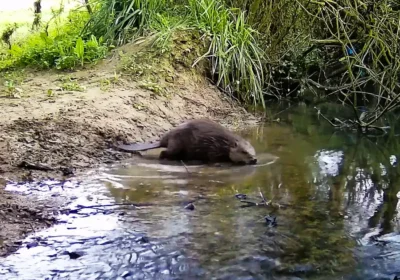by Sally Gregson.
As the days shorten, the temperatures cool, and the garden starts to shut down for the winter, there are fewer flowers to greet a sunny autumn morning, fewer to make into bunches for the kitchen table or cheer a gardener’s heart. But Schizostylus is one such. The unpronounceable name has recently changed to Hesperantha, bringing much-needed relief to those who ‘hate Latin names’. In truth there is never a ‘right’ pronunciation. Plant names are not a language.
Hesperantha flowers right at the end of the year, starting in September as the nights lengthen, opening its flowers from the bottom of the stem up to the tip around Christmas time. Often our autumn gales and heavy rain damage these special flowers, so many people cut off the spikes and arrange them in red and pink bunches for the house.
They are plants of the South African plains, growing in the wild on the banks of streams among grasses. And that is where they excel. Despite their exotic heritage, they are tough plants. They are completely frost-hardy here in the UK, although they prefer a slightly less-than-damp soil, and bright open sunshine.
All summer, hesperantha make lots of foliage that mostly resembles grass, but with wider leaves. In the wild their flowers are mostly shades of coral red and pink. But European plant breeders have selected out some good, strong colours and named them. There’s H. coccinea ‘Major’ with light coral-red flowers at a typical height of 50cm, which quickly bulks up to form a wonderful colour contrast with the royal-blue flowers of Ceratostigma, or the variegated leaves of Cornus alba ‘Elegantissima’ as it reddens for autumn.
Then H. coccinea ‘Jennifer’ has been selected for its strong coral-pink flowers that stand out among faded blue grasses such as Panicum ‘Prairie Sky’ with its china-blue leaves. And H. coccinea ‘Pallida’ whose palest pink flowers are streaked with white shows up well beneath the last flowers of that repeat-flowering rose, Rosa ‘Mutabilis’. The pinks glance off each other throughout the remainder of the autumn.
Hesperantha are easy to propagate – divide the dormant rhizomes in spring. Re-plant the divisions into retentive garden soil enriched with plenty of garden compost, allowing space for them to expand, and water them well to settle them. And wait for next autumn.









Leave a Reply